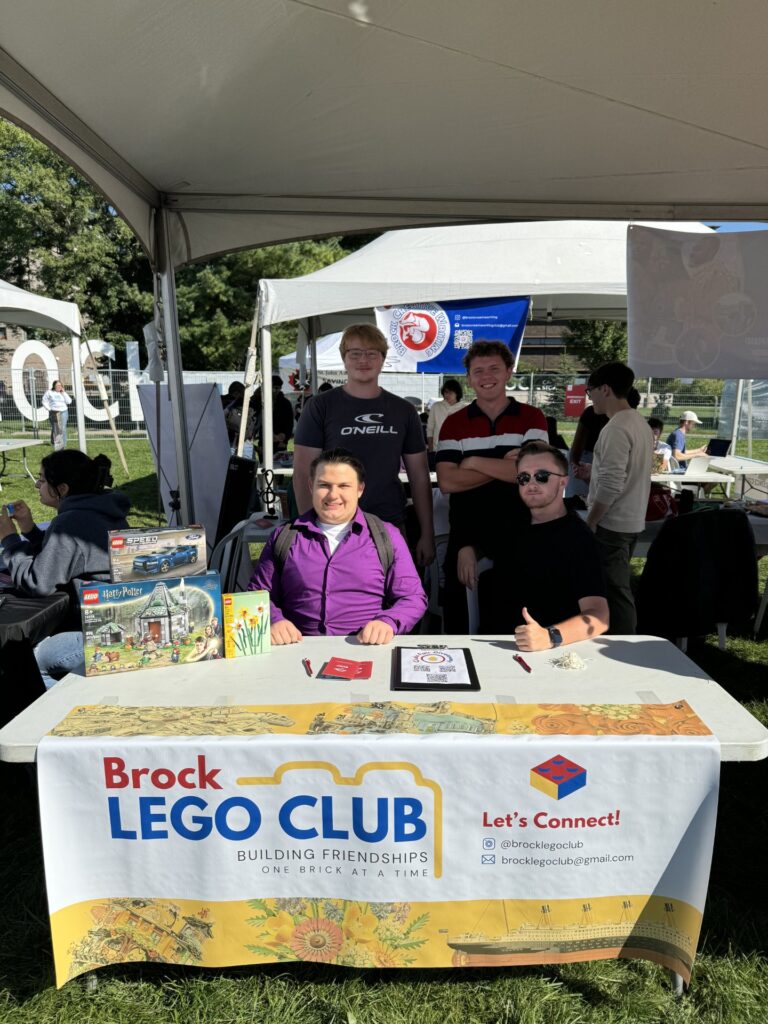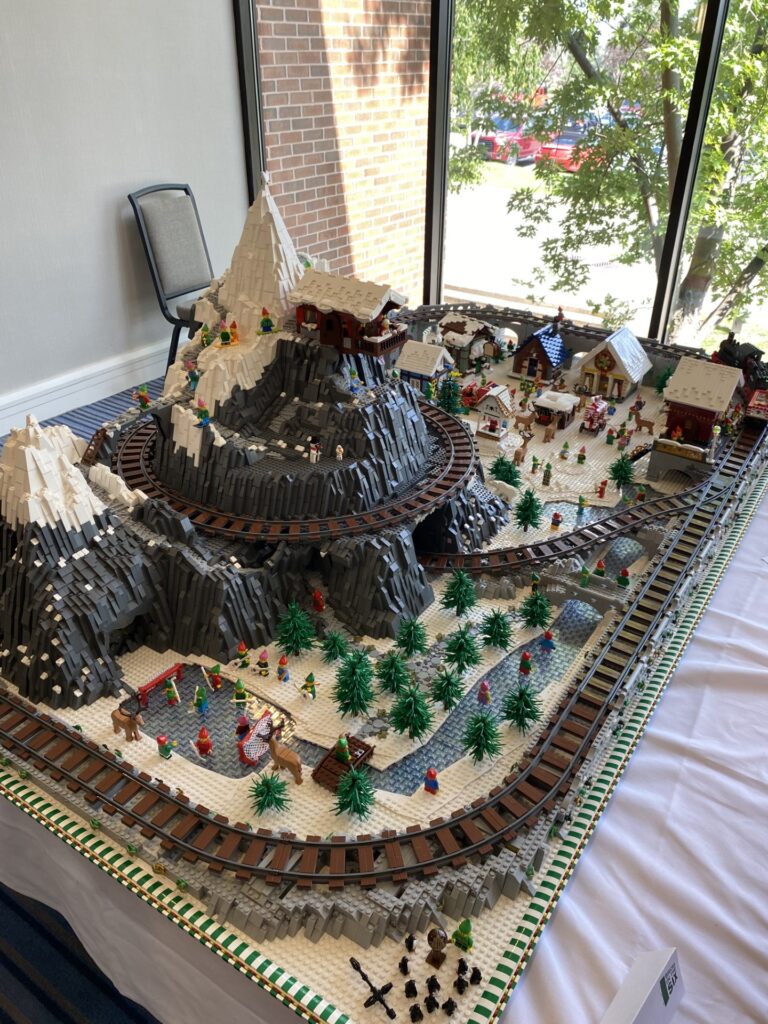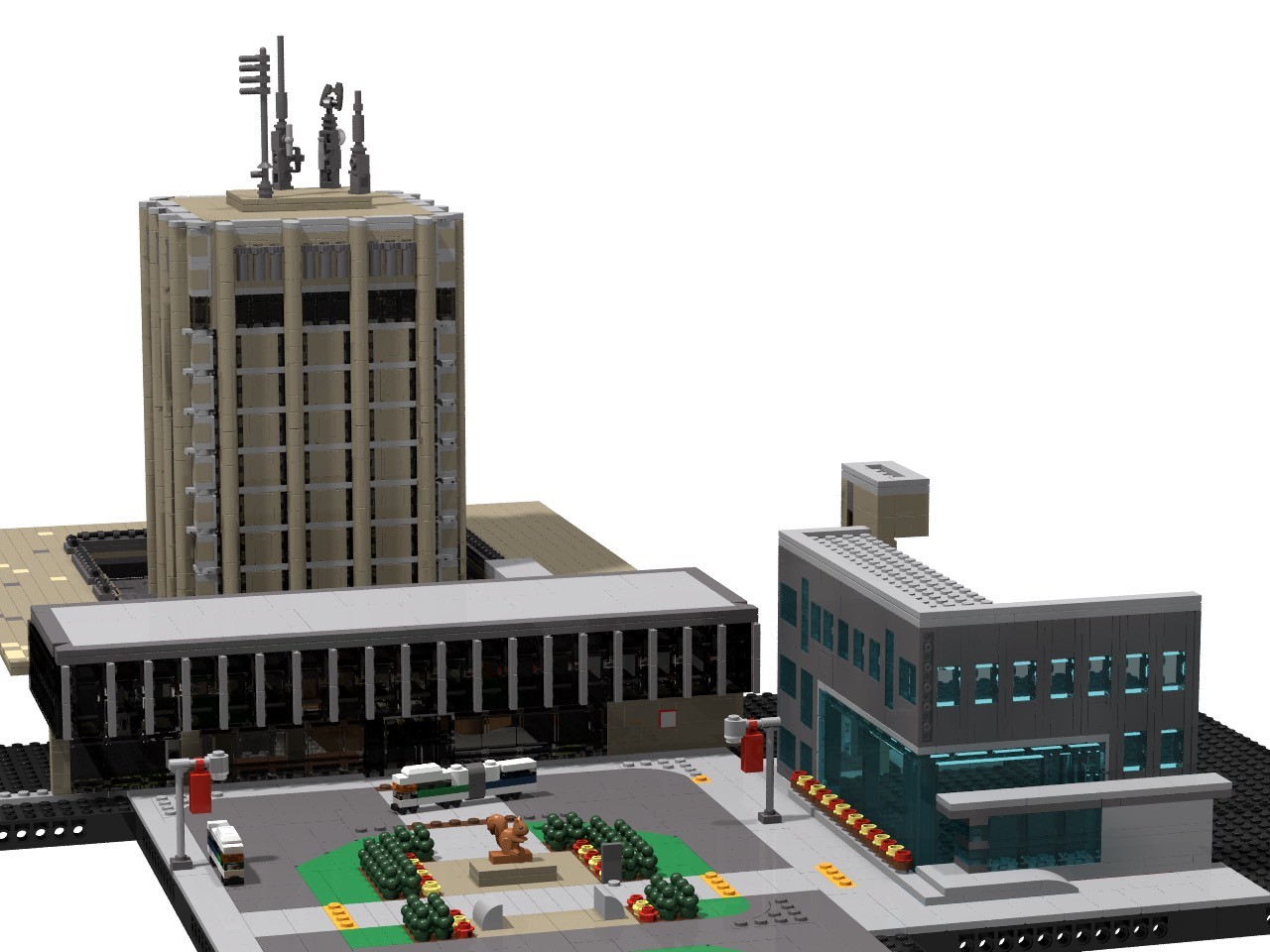The Lego Club has big plans for their second year, the biggest being further progress on a thirty-six-foot squared model of Brock University.

When last interviewed by the Press, Lucas Michlik and Jaiden Dahlke discussed their plans as first-time executives of a then brand-new club. Now, with a year of experience under their belt, the club is making headway on their Lego Brock Model, by far their most ambitious project yet.
Michlik and Dahlke hosted their first club meeting on Friday, Sept. 13, but their work on the Brock Model continued throughout the summer as they worked tirelessly with “core” club member Luke Edmonds to design the iconic Schmon Tower, the surrounding Rankin Family Pavilion, the front of the Goodman School of Business and the bus loop.
“It’s just crazy,” said Dahlke about Edmonds’ designing abilities. “He can look at the campus and… he immediately knows what Lego parts to use.”
The model is micro-scale — meaning it’s built to a smaller scale than the traditional minifigure-scale you would see in most sets — and planned digitally on the Lego designer software Stud.io. Their most up-to-date design, the one you see overhead, consists of 5,046 meticulously planned Lego pieces which fill a three-foot squared space — but the plan is far from complete.
Michlik estimates that the completed model will contain around 25,000 pieces, stretching six feet long and six feet wide. The Cairns complex itself could be two feet long. While they’ll be unable to work at the same pace they did over the summer, Michlik and Dahlke are hopeful they’ll be able to complete the design by the end of the school year. Actually building the model, however, could be imminent — at least building what they’ve already designed.
The Lego Club executives hope to start building the Brock Model as soon as January, but their plans are heavily reliant on the financing they’re able to secure from BUSU: “I don’t know how much funding they have this year. Building the whole thing depends on how much funding they have and they’re willing to give us,” said Michlik.
In their best-case scenario, Michlik says they might receive the full funding for the Brock Model — which they’ve estimated at around $10,000 — this year.
“We got a decent amount of money last year and we presented in November,” said Micklik. “This year we’re presenting in September so we’re ahead of the game.”
Their hope about funding comes from the interest he says they’ve received from both BUSU and the President’s office in making the Brock Model a permanent fixture of the university.
“We would be happy giving it to Brock,” said Michlik. “I think it’s a cool project for a university campus.”
However, funding and interest play an important part in determining what the final product will look like. “It’s hard to say because I don’t know how far we’re going to go with it,” said Michlik, especially as he and Dahlke are approaching the end of their degrees.
BUSU’s response to their upcoming funding presentation will determine much of the Brock Model’s future: “If they’re really encouraged by this and they say let’s do the whole [campus], or let’s just do this and Mackenzie Chown and South Block, it really differs. They might say let’s do the residences as well; let’s do the whole parking lot.”
Regardless, the Lego Club believes this is not only an exciting project for Brock and its students, but one that could light a spark in universities across the continent:
“As a Lego club, I think doing something like this — and then especially donating it to Brock — is just so valuable, not only for the club and us ourselves but for the university.
“I think it would be something most universities would probably get on if they saw our project, so I think getting that out there would be really cool and it makes Lego seem less like a toy and more like a creative outlet or even art,” said Michlik.
And art it promises to be, whether it be a full model of the campus or just the central buildings they have at the moment:
“You’re like, ‘wow, that’s Brock made out of Lego, that looks like Brock!’” said Michlik.
The Brock University Lego Club has many plans and ideas for this year, especially after “[learning] how many people actually love Lego,” said Dahlke. This includes a trip to Toronto’s Bricks in the Six — an opportunity for students to see custom Lego creations closer to the scope of the Brock model — and a lot more building, not just the Brock Model but other Lego sets, big and small.

“A lot of larger Lego sets are prohibitively expensive for a casual Lego [fan],” said Dahlke, referring to the larger kits which can cost hundreds of dollars. The club is a “good way” to “see these sets and be involved in building them.”
The Brock Model is an exciting part of a club with exciting plans, and depending on how the next month goes, the Schmon Tower may be meeting its new baby brother in 2025.
To stay updated about the Brock University Lego Club, students can follow their Instagram and ExperienceBU pages. Students interested in the upcoming Bricks in the Six trip are encouraged to fill out this Google Form.

